
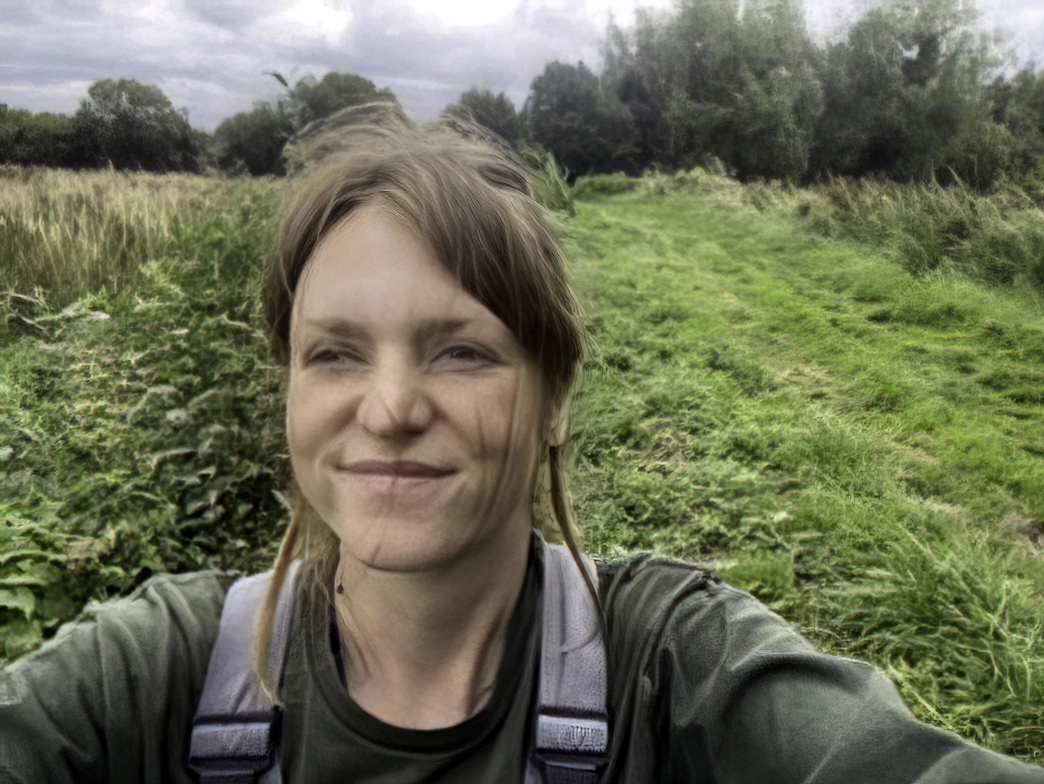 As Reserve Warden and Outreach Officer at Shapwick Moor Nature Reserve in Somerset, Alex Learmont plays a key role in managing the site and inspiring the next generation of nature lovers.
As Reserve Warden and Outreach Officer at Shapwick Moor Nature Reserve in Somerset, Alex Learmont plays a key role in managing the site and inspiring the next generation of nature lovers.
Q. What does your role involve?
As Reserve Warden and Outreach Officer at Shapwick Moor, my role is incredibly varied, with a focus on practical conservation - managing the habitats and wildlife that make the site special. I also attend regular stakeholder meetings and collaborate with organisations like Natural England, the Wildlife Trust, and the RSPB on conservation initiatives.
A big part of my role is education and community outreach. We run a weekly programme with a local Somerset school, bringing Year 7 and 8 students out to the reserve for seasonal activities like wildlife surveys or hands-on tasks such as digging and removing tree guards.
This year, I’m doing more visits to local schools to give talks, which has been a great way to connect with students who can’t make it to the reserve. The enthusiasm, especially when it comes to owls, has been fantastic, and I hope to expand this even further in 2026.
Q. What’s your typical day like?
A typical day might start with me doing a morning check around the reserve: topping up bird feeders, inspecting the paths, or carrying out general maintenance. Later, I could be out doing an Otter survey, often with the help of some fantastic volunteers. These surveys involve assessing the habitat’s suitability by recording features like water depth, flow, surrounding vegetation, and signs of disturbance, as well as looking for evidence of otters such as spraints (droppings), holts (underground dens), footprints, and feeding remains. In the afternoon, I might be off-site meeting with one of our partner organisations to discuss ongoing conservation work.
No two days are the same, and that variety keeps things interesting for me.
Q. How did you get into your role and conservation?
I studied zoology at university, which gave me a solid foundation, and like a lot of people in conservation, I started out by volunteering with my local Wildlife Trust. That was my way in. After that, I took on a variety of roles in conservation ecology, gaining experience across different areas.
At one point, I made a bit of a shift and worked in visitor experience for the National Trust, which was much more focused on people and events. That gave me a whole new set of skills around engagement and public outreach.
A few years ago, I saw the job advert for this role at Shapwick Moor. I'm from the local area and already knew the reserve quite well, so I thought, “Wow, what an amazing opportunity.” I went for it, and I’ve now been here for about three years.
It’s been fantastic. I’ve learned so much, especially on the practical side of conservation, with lots of training opportunities, and gaining experience from our volunteers and colleagues. I feel incredibly lucky to be in a role like this.
Q. What do you enjoy the most about working for a conservation charity?
For me, one of the most rewarding things is having a positive impact on this little patch of land that I’m responsible for. The longer I’ve been here, the more I’ve come to love the site - you start to know it deeply, notice the changes through the seasons, and feel connected to the place in a way that’s hard to explain.
On a practical, day-to-day level, I just love being outside. I’m sat here now watching a Marsh Harrier and a Buzzard having a bit of a scuffle overhead. You’re constantly surrounded by nature, and you never quite know what you’ll see.
That sense of knowing a site, not just the species, but how it lives and breathes throughout the year is probably what I love most. It’s a privilege to be part of something like that.
Q. What wildlife do you have on site at the minute?
The resident birds are definitely waking up! Our birds of prey, including Marsh Harriers, Buzzards, and Kestrels, are actively engaging in courtship displays and beginning to establish their territories, as well as the infamous Barn Owl! After a busy survey season, it’s wonderful to see the site coming alive even more, with wildlife visible everywhere.
Q. What have you got planned for the rest of 2025?
One new thing we’re launching this year is a dragonfly transect survey, which I’m excited about. We’ve always known we’ve got loads of dragonflies and damselflies here, but we’ve never monitored them properly. Now we’ll have a fixed route divided into sections, and our volunteers will walk it regularly, recording everything they see. All of that data gets fed back into a central database, which helps build a picture of how our insect populations are doing over time.
We’re doing it in partnership with a fantastic group called ROAM (Recorders of the Avalon Marshes). They’re full of local experts who’ve helped us set up a proper survey route on the reserve.
We’ll also be continuing with our regular guided walks, which run twice a month and are always a lovely way to engage people with the reserve.
We’ve built a reptile hotel inspired by successful designs at other reserves, and we are hoping it will become a great spot for snakes and lizards to bask. With some patience, visitors might even spot a grass snake. Our surveys show a healthy grass snake population, regular sightings of slow worms, and we’re still on the lookout for adders.
Q. What topics do you cover in your talks?
When I speak to adult groups and local community organisations, I tend to focus more on the reserve itself - talking about the practical side of conservation, why we do certain things, and how we manage the land and wildlife. People are usually interested in the behind-the-scenes side of running a nature reserve.
Everyone loves owls – so in schools, especially when I’ve done talks with Chris Sperring, we usually cover things like owl adaptations, what makes an owl an owl, the different species we have here in the UK, and some of the conservation work we do to help protect them. Owls are always a hit!
Q. What are some of your favourite projects that you've worked on over the years with the Hawk and Owl Trust?
Setting up the monitoring programme at Shapwick Moor has been a hugely rewarding project. It transformed our approach from ad hoc surveys to a comprehensive, volunteer-led system that tracks everything from wildflower habitats to reptiles. Many volunteers had no prior experience, but through training and hands-on learning, they’ve grown confident enough to lead surveys independently.
A standout moment was confirming a strong harvest mouse population during our small mammal surveys, which now guide how we manage the land. It’s been a real team effort and something I’m incredibly proud of. It’s not just about collecting data; it’s about building knowledge, skills, and a deeper understanding of the land we care for.
Q. What is your favourite wildlife species?
Water Voles are one of my favourite species for their characterful nature – and we’re lucky enough to have them here on the reserve. We don’t see them that often, but there are plenty of signs if you know where to look. You can spot their burrows along the banks and look out for feeding signs, like little piles of nibbled vegetation.
I did have a special moment last year when I saw a little juvenile, just a tiny baby Water Vole, up close. It was one of those lovely encounters you remember for a long time.
Q. What advice would you give to someone interested in conservation?
My biggest piece of advice is to always stay curious. Having a sense of wonder and a questioning mind helps you connect with nature. Ask questions, go outside, and just watch and listen to what’s going on around you. Conservation is all about being aware of the little details – like hearing birds sing or noticing the different species in your garden. That’s how I learned growing up, as none of my family were particularly into wildlife. I spent hours just observing and picking up on things like bird calls and other sounds.
Volunteering is also key! Whether it’s with local groups or organisations, that’s the best way to gain hands-on experience and start learning from others. It’s all about getting involved and building those connections.
If Alex’s work has inspired you, why not visit Shapwick Moor and experience the reserve for yourself? With British summertime now in full swing, now is the perfect time to plan your visit.
To explore our upcoming events, visit: https://members.hawkandowltrust.org/Event-Search
For further information about Shapwick Moor, visit: https://shapwick.hawkandowltrust.org/
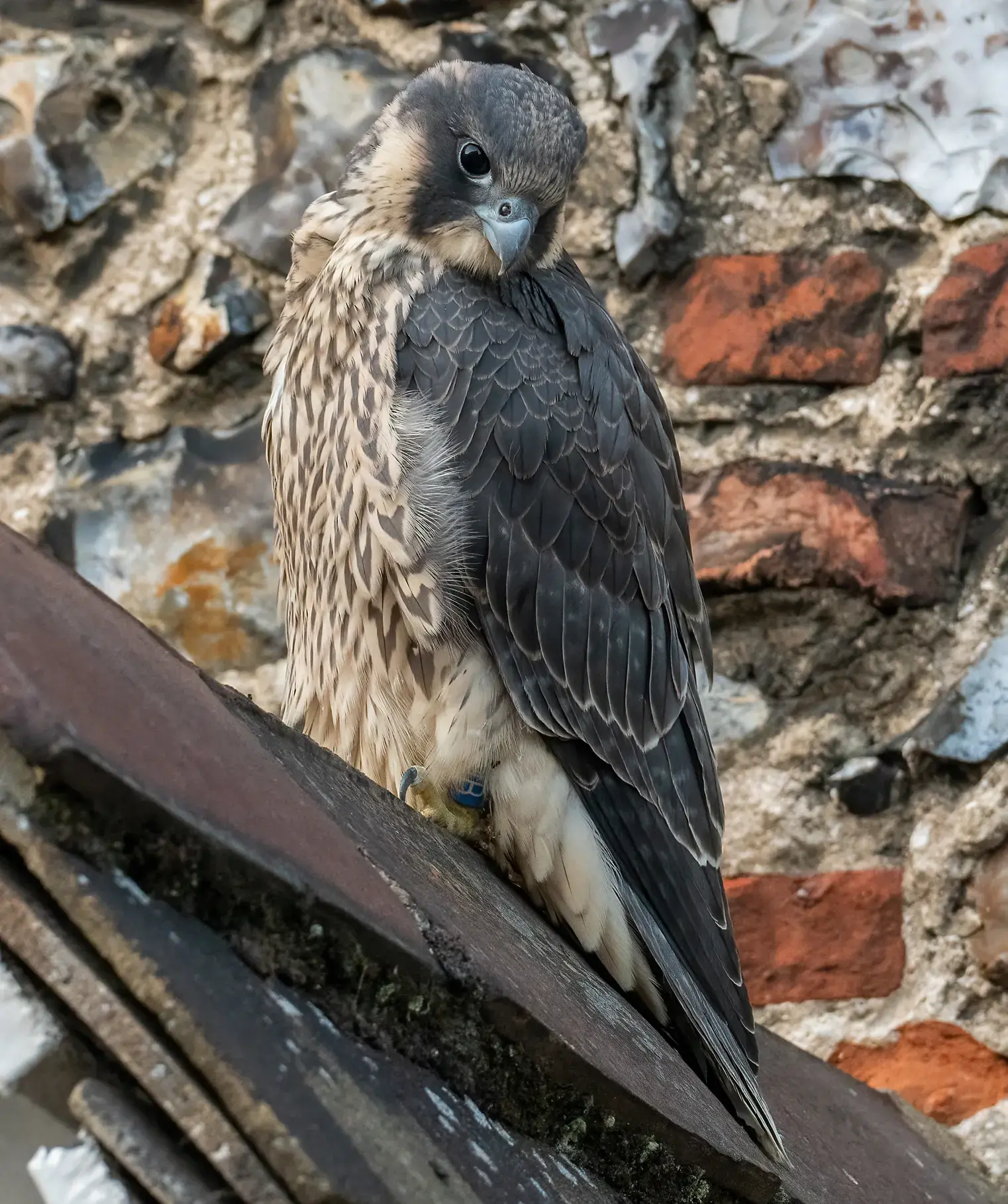
19 June 2025 – Wildlife watchers have cause for celebration as a Peregrine Falcon chick took its first flight last night (18 June) from the Norwich Cathedral spire - an exhilarating moment that quickly turned into a rescue mission.
The first of the fledglings took to the skies yesterday evening after a clutch of four eggs was laid in late March. Of the four eggs laid, two chicks survived, one male (MA) and one female (MB).
The female fledgling’s first flight was witnessed by thousands of conservationists and bird enthusiasts worldwide via 24-hour live-stream nest cameras, set up by national bird of prey conservation charity the Hawk and Owl Trust in partnership with Hawke Optics.
After fledging from the nest at approximately 6:40 pm, unfortunately the young Peregrine landed on the ground but managed fly up to reach the first-floor ledge. A decision was made to retrieve her and return her safely to the bell tower. Fortunately, there were willing helpers on site with prior Peregrine experience who were readily available to support the young bird during this critical stage of development.
Liberty Wells, Outreach and Conservation Ranger at the Hawk and Owl Trust, commented, “It’s always remarkable to witness the moment Peregrine Falcon chicks take to the skies for the first time. When we believe intervention is necessary to support a young Peregrine’s survival, we will not hesitate to act. Last night was a true team effort to ensure the chick’s wellbeing, and I’m deeply grateful to everyone who contributed their support. From our Watchpoint at Norwich Cathedral, visitors have been able to follow their first weeks of life building up to this point. With over 74,000 people already tuning into the live nest camera and hundreds of visitors to the Watchpoint this year, it’s clear that these birds have captured the imagination of the public once again.”
The Watchpoint trailer is parked outside of Norwich Cathedral on the close green and will be open from 10am to 4pm, three days a week throughout June.
About Peregrine Falcons
Peregrine falcons are crow-sized birds with blue-grey backs, barred white underparts, and distinctive yellow talons and beaks. Capable of reaching speeds over 200 mph when hunting, they are the fastest animals on Earth. They nest in shallow scrapes called “eyries”, often on high ledges like cathedral towers, laying 3 to 4 eggs per year. While they don’t mate for life, they frequently return to successful breeding sites. Once threatened by persecution, Peregrines have adapted to urban life, with 1,769 breeding pairs in the UK, including 200 in cities, where artificial light helps them hunt migrating birds at night.
Hawk and Owl Trust live stream locations
Through live streaming, research, and information trailers, the Hawk and Owl Trust’s Peregrine Project ensures that active breeding pairs of peregrine falcons in the UK continue to increase.
Peregrine Falcons can also be seen nesting in other locations that the Hawk and Owl Trust have been live streaming, including in Bath. Late spring to early summer is the best time of the year to tune in to one of the Hawk and Owl Trust’s webcams as you follow the journey of the birds through their hatching season.
The Hawk and Owl Trust is encouraging people to donate while watching the live streams to support the birds and initiatives like the ‘Peregrine Project’ in the future.
To find out more information about the Peregrine Falcon species and view the Norwich Cathedral live stream, visit https://hawkandowltrust.org/live-cameras/norwich-cathedral-peregrines.
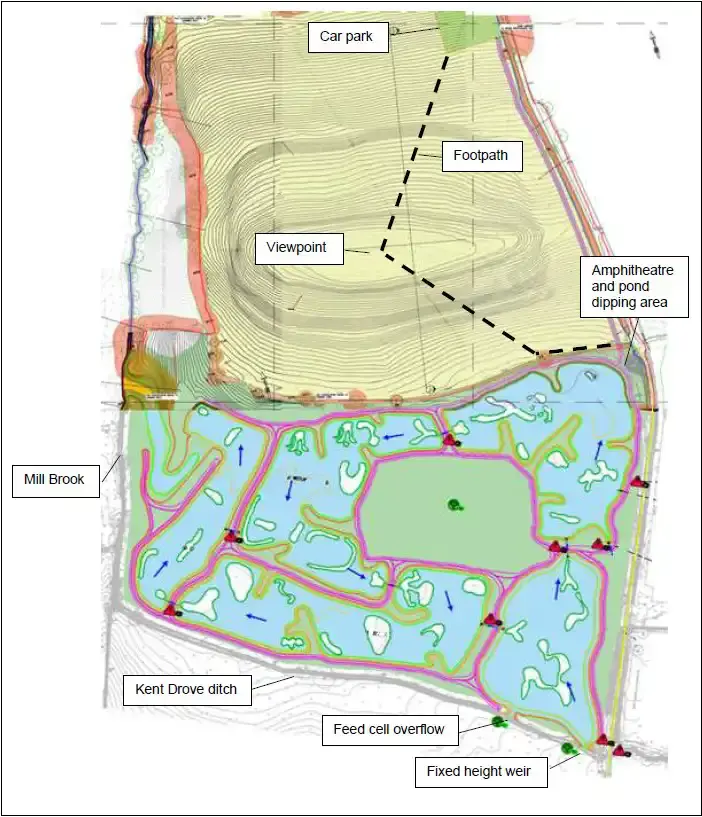
 Exciting plans are underway to further protect the historic Somerset Levels and Moors, with a new wetland project set to improve water quality and create even more space for wildlife.
Exciting plans are underway to further protect the historic Somerset Levels and Moors, with a new wetland project set to improve water quality and create even more space for wildlife.
What’s happening?
Wessex Water has unveiled multi-million pound plans to create new wetland habitats on more than 25 hectares of land within the Somerset Levels and Moors, next door to our Shapwick Moor Nature Reserve, between Bridgwater and Glastonbury.
The two-part site would see the creation of an integrated constructed wetland and a new grassland site, with the ambition for this land to become a haven for wildlife under the stewardship of the Hawk and Owl Trust within the Somerset Wetlands National Nature Reserve.
What is an Integrated Constructed Wetland?
This natural water treatment system will use wetland plants to filter and clean river water before it reaches local rivers and streams. By reducing harmful nutrients - which can come from agricultural fertilisers, farm slurries, septic tank discharges and domestic wastewater – the project will help protect the delicate balance of the Somerset Levels, a landscape rich in birdlife and biodiversity.
Unlike constructed wetlands, Integrated Constructed Wetlands are designed to also integrate into the surrounding environment and can provide added benefits such as regulating water flow and enhancing biodiversity, wildlife habitats and space for recreation.
Where does the Hawk and Owl Trust fit into all of this?
Working in partnership with Wessex Water, the Hawk and Owl Trust has been involved in this project for several years, helping to shape plans that will benefit nature and people alike.
As the closest neighbours, Hawk and Owl Trust land will be used to provide construction access.
We are also in discussions with Wessex Water about a long-term lease to incorporate the wetland and grassland into our nature reserve once the project is complete.
What does it mean for our conservation work?
At Shapwick Moor, we already carry out extensive monitoring of water quality and biodiversity, helping us understand how changes in the environment affect local wildlife. This new wetland will allow us to expand our work, collecting even more valuable data on how natural solutions can improve water health and support species like otters, dragonflies, and wetland birds.
What does it mean for visitors to Shapwick Moor?
This project will also provide an opportunity to improve visitor facilities at Shapwick. While plans are still in development, we hope to introduce new bird and badger hides, as well as an outdoor amphitheatre for educational activities. These additions will enhance the experience for nature lovers, birdwatchers, and local school groups, offering more ways to connect with the stunning wildlife of the Somerset Levels.
What’s next?
The project is currently awaiting planning approval from Somerset Council. If permission is granted, construction is expected to begin in summer 2026 and take around six months to complete. We will continue working closely with Wessex Water and other partners to ensure this wetland not only improves water quality but also benefits the local ecosystem and our visitors.
This is a fantastic example of how conservation and responsible land management can work together to protect and enhance our natural landscapes.
We look forward to sharing more updates on our website and our Facebook and Instagram pages as the project progresses.
For more information, visit: www.wessexwater.co.uk/somerset-wetland
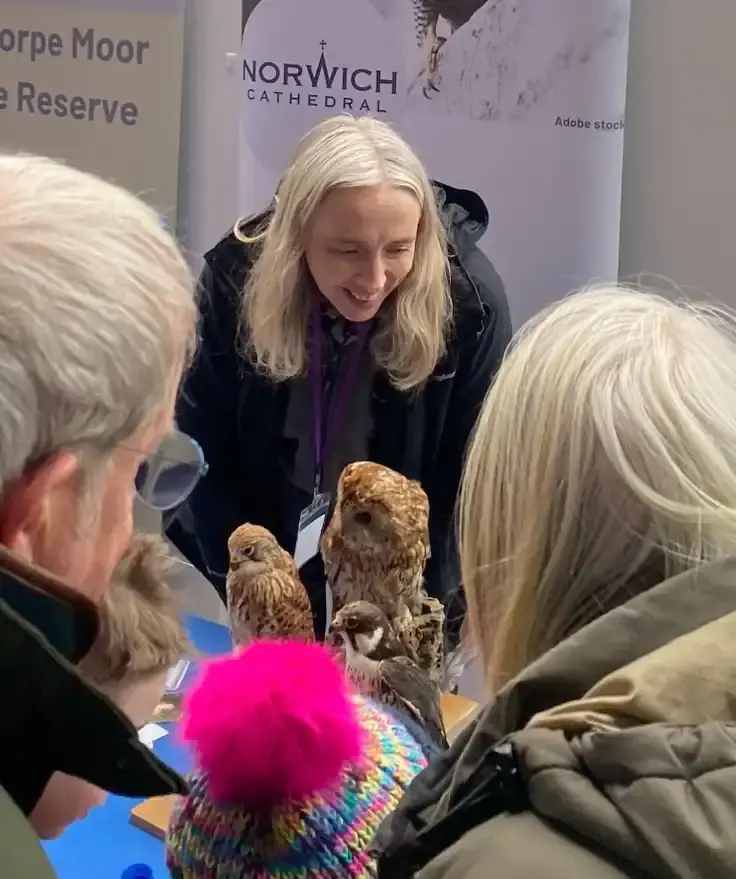
Victoria Chamberlin plays a key role in inspiring the next generation of nature lovers through education and public engagement at our Sculthorpe Moor Nature Reserve in Fakenham, North Norfolk. From leading school visits and outreach sessions to organising events that connect people with wildlife, her work helps make nature accessible to all. We sat down with Victoria to learn more about her journey, her role, and what she finds most rewarding about working in conservation.
Q. How did your journey with the Hawk and Owl Trust begin?
A. My background is actually in teaching – I trained as a primary school teacher and then moved into museums education, working in London and Norfolk for several years. After having children, I took some time out and found myself drawn to wildlife, particularly through birdwatching in my own garden. That led me to start volunteering with the RSPB, running school outreach sessions and helping with public engagement. I absolutely loved it, and when the role at the Hawk and Owl Trust came up, it was the perfect fit! I've now been here for over three years, and I still love what I do.
Q. What does your role involve?
A. My work is all about connecting children and families with nature. A big part of my role is developing and delivering our schools programme, which includes on-site workshops at Sculthorpe Moor and outreach sessions where we visit schools. Our workshops are designed to support the Key Stage 1 and 2 science curriculum, covering topics like habitats, food chains, and bird adaptations, and I work closely with teachers to ensure they are relevant, engaging, and accessible. Teachers love that our sessions bring learning to life in a hands-on way – whether it’s pond dipping, birdwatching, or exploring the reserve’s different ecosystems.
The other side of my role is organising events at the reserve. Along with my colleague Libby, I organise events for visitors of all ages, from guided walks and wildlife talks for our regular supporters to nature trails, activity days, and wildlife experiences that give children and parents the chance to explore the outdoors together. Our Discovery Days in the summer are always a highlight, and with Easter coming up, we have lots of fun activities planned for the school holidays! A big part of my job is showing people that nature reserves aren’t just for expert birders – everyone is welcome, and there’s something for everyone to enjoy.
Q. What does a typical day look like for you?
A.Every day is different! If I’m working with schools, I might be leading a pond-dipping session, running a workshop on birds of prey, or delivering an assembly. On the events side, I could be planning upcoming activities, creating educational resources, or setting up for one of our big Discovery Days. I also spend time on outreach, visiting schools that might not otherwise get the chance to experience nature first-hand.
Q. What do you enjoy most about working in conservation?
A. I love seeing people – especially children – light up when they connect with nature. One of my favourite moments was hearing from a family who said their visit to Sculthorpe Moor was the highlight of their summer. Moments like that remind me why we do what we do. I also love working with schools that might not normally have access to outdoor learning. Nature can be transformative, and I feel very lucky to play a role in making that happen.
Q: What’s coming up for you in 2025?
A. We’re continuing to expand our education programme, and we have a busy summer term ahead with lots of schools coming to do activities at the reserve.
We also have a packed calendar of public events for the year. For families, we have a fantastic programme lined up, including Easter holiday activities in April, our ever-popular pond dipping sessions, and new nature trails to explore. Our updated activity calendar is out now, so families can start planning their visits!
Q. Do you have a favourite wildlife species?
A. It has to be the Barn Owl. They have this incredible ghostly presence when they glide over the reserve at dusk. I also have a soft spot for Red Kites – not just because they’re beautiful birds, but because their comeback story is such a great example of conservation in action. It’s a reminder that we can make a difference.
Q. What would you say to teachers or families thinking about visiting?
A. Just come and experience it! Teachers will see first-hand how engaged their pupils are in an outdoor learning environment, and parents will love watching their children discover the natural world. Whether you’re visiting as a school group or a family, there’s something here for everyone.
If Victoria’s work has inspired you, why not visit Sculthorpe Moor and experience the reserve for yourself? With British springtime now in full swing, now is the perfect time to plan your visit.
To explore our upcoming events, visit: https://members.hawkandowltrust.org/Event-Search
For further information on our activities for schools, visit: https://sculthorpe.hawkandowltrust.org/information/education
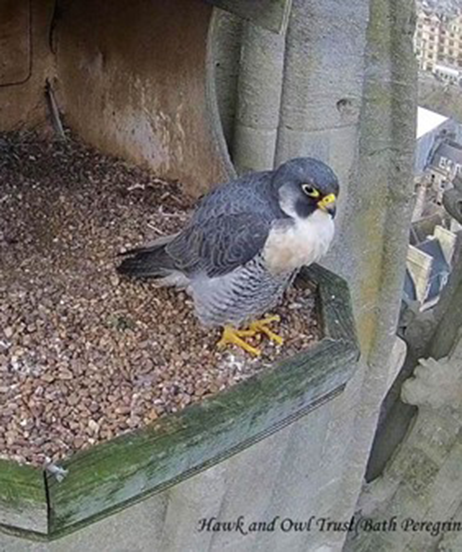
Our followers will have noticed—no eggs yet this season. But there’s been an intriguing development…
We’re pretty certain we have a new falcon in town! She likely arrived in late January or early February and has been showing some very different behaviour around the church and nest box. One standout habit? Perching on the patio edge alongside the tiercel—something we haven’t seen before.
She’s also a neater-looking bird. At first glance, we even mistook her for the tiercel! But unlike last year’s falcon, she lacks the distinctive crown markings and has a slightly smaller frame with a paler, less mottled bib.
That said… things aren’t entirely straightforward. The previous falcon has also been spotted around the church—and even at the nest. 🤔
Lots of activity, but no eggs just yet. We’ll be keeping a close watch and sharing updates as the season unfolds!
This is the falcon from last year; pl note the distinctive white spot just to the left side of the crown:
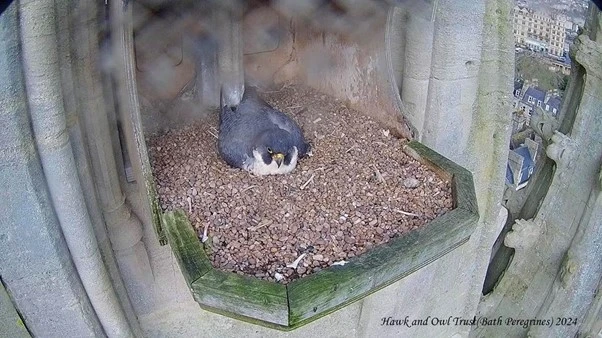
…..and this is what we are calling the ‘new’ falcon for this year; definitely a different bird…..
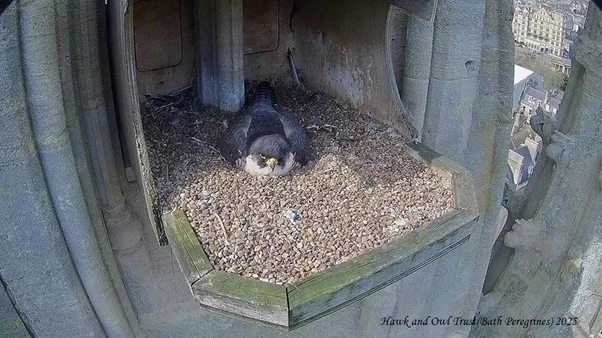
Initially we thought this falcon was in fact the tiercel, but his distinctive white spots above the eyes were absent, and he is still in evidence; this shot from 19 Mar; hence why we have said we had a new falcon.
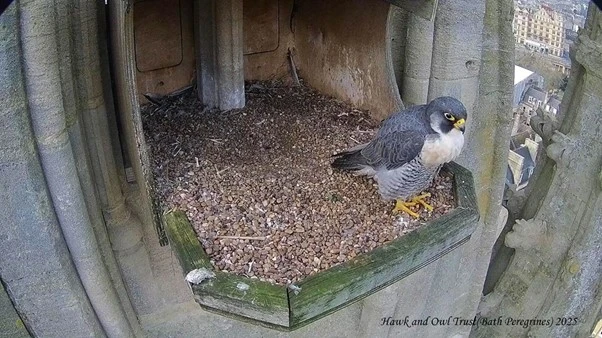
- Celebrating a fantastic Norwich Science Festival 2025 with the Hawk and Owl Trust
- Get to Know... Liberty Wells, Outreach and Conservation Ranger at the Hawk and Owl Trust
- Get to Know... Chris Sperring, Conservation Officer at the Hawk and Owl Trust
- How Can Nest Box Sponsorships Support Conservation Efforts?




